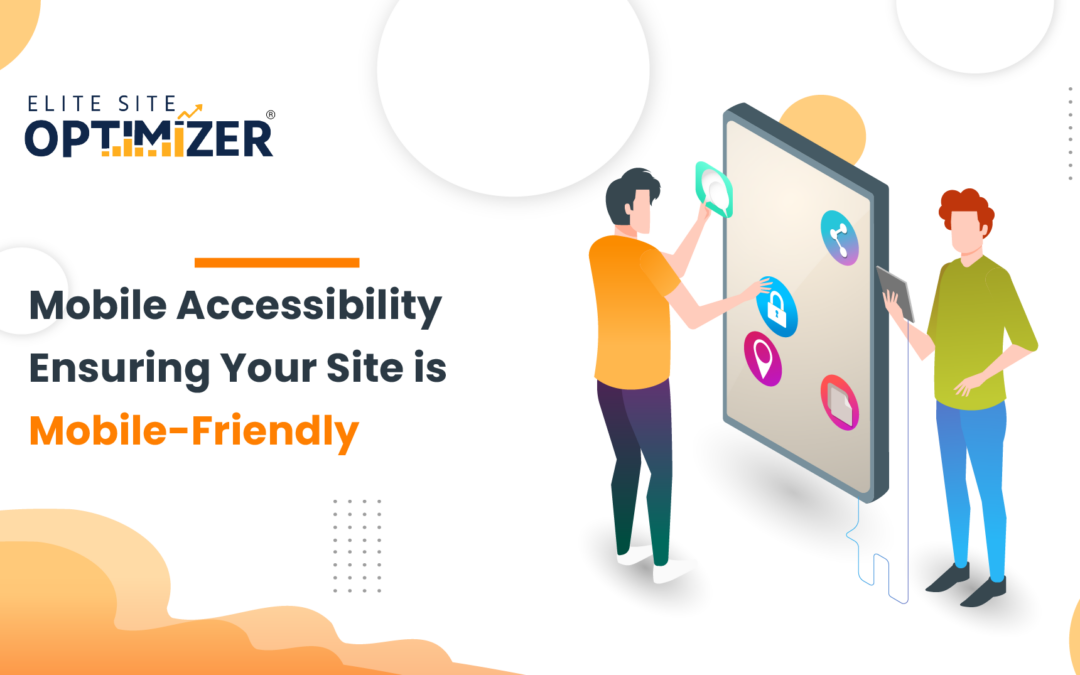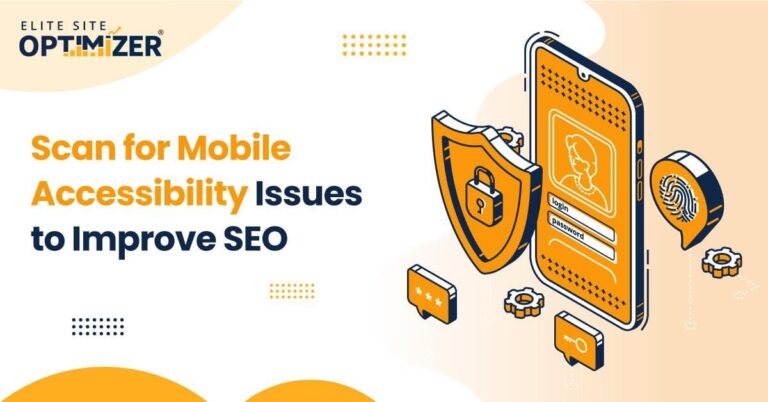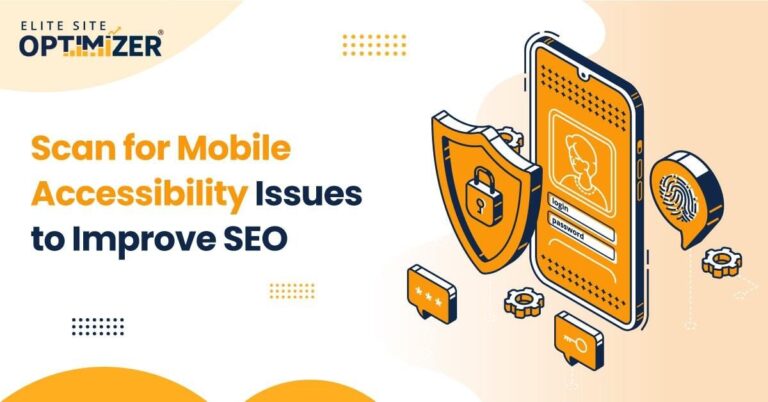The 2020s are all about digitalization. Every aspect of people’s daily lives, from learning to entertainment to commuting and more, is dependent on the web and digital devices. Therefore, it is crucial to ensure web accessibility. Simply put, web accessibility can be defined as adhering to design and development principles that make a website accessible to all users, including those with impairments, disabilities, and limitations.
However, as we fast-track into a mobile-reliant world, it is not simply enough for websites to just tick the accessibility checklist for desktops. Many users, including those with disabilities and other situational limitations such as poor internet connections, might access a site through a mobile device. Thus, it is equally important to ensure mobile accessibility. What is it all about? Let us find out!
What’s mobile accessibility?
Mobile accessibility involves creating websites and apps that individuals with disabilities can use on mobile devices. Mobile accessibility is sometimes disregarded, but with more phone users, pages must be available from anywhere.
Making your website mobile-friendly for people with visual, aural, and cognitive challenges makes your brand’s information accessible to all visitors, improving the user experience.
Mobile Accessibility Matters
Mobile accessibility is essential for equitable opportunity, particularly for disabled users. People, including those with disabilities, use mobile devices for communication, entertainment, and information. Your site’s mobile accessibility allows 15% of the world’s handicapped population to access digital information and services.
Mobile accessibility benefits businesses too. Your site’s user experience improves with mobile accessibility. Results include improved revenue, customer loyalty, and accessibility compliance. Making your mobile applications and websites accessible may boost user trust and provide a positive user experience for all consumers.
Common Mobile Accessibility Issues
Before we discuss mobile accessibility best practices, let’s examine some of the most prevalent mistakes.
- Poor Color Contrast
Your site’s mobile interface’s text may be hard to see for some, particularly those with color blindness.
- Unlabeled Controls/Links
Your mobile website becomes a mobile accessibility nightmare if links and controls are mislabeled or unlabeled.
- Lack of keyboard accessibility
Many disabled people, such as those with motor impairments, use the keyboard to access websites. If your mobile website lacks keyboard shortcuts for navigation and feature use, disabled users cannot access it.
- No screen reader support
A ‘screen reader’ can convert digital text into Braille or spoken language for visually impaired people. If your website’s mobile UI doesn’t work with screen readers, blind people can’t access it.
- Poor Heading Structures
When headings are ignored, screen readers have trouble navigating mobile sites. Thus, correct heading structure is essential while building mobile interface content.
- Images Without Alt Text
Alt texts improve smartphone accessibility. They help vision-challenged people understand images. They also help slow internet users access your site. However, with alt pictures, screen readers can understand the meaning of your mobile site’s visuals, causing confusion and turmoil.
- Not using semantic HTML
Finally, not utilizing semantic HTML while building your mobile app or website might reduce accessibility. It hinders assistive technology page interpretation.
After a quick review of the top 7 mobile accessibility issues, let’s look at some simple ways to make your brand’s site accessible.
Steps to ensure your site is Mobile-friendly and Accessible
1. Create a Responsive Design
A responsive design means that your website effortlessly adjusts to various screen sizes and devices. It is a crucial element of mobile accessibility and enhanced user experience. A responsive design, thus, adjusts to multiple screen sizes without compromising on usability, quality, or accessibility. It will thus look great on all devices, whether the visitor is browsing your website on a laptop, tablet, or mobile phone. Users who may find it challenging to view a website on a tiny device, such as those who have mobility or vision impairments, would particularly benefit from this.
2. Simplify the website’s layout
The concepts of accessibility and simplicity are complementary. So, avoid placing many calls to action on a single page when designing your website’s mobile experience. On a tiny screen, too many activities may make navigating challenging and confusing. For ease of access and comprehension, you should make sure the website is designed simply. Utilizing white spaces guarantees that consumers can see everything at a glance and lessens cognitive stress. To guarantee mobile accessibility, particularly for those with cognitive disabilities, a basic web design is essential.
3. Verify that you can navigate the mobile website with one hand.
Aim to make your navigation menu readily reachable with one hand and steer clear of positioning critical components in awkward spots. Sort the content of the webpage logically from top to bottom.
4. Large, legible font
When your site is viewed on a smaller screen, a font size of 14px is acceptable. Search engines tend to penalize websites featuring fonts lesser than 12px.
Mobile devices may make script-type fonts harder to read, so don’t try them. Keep the font style constant and bold various lines of text.
Use black text instead of color. This helps consumers see background colors and reflections like sun glare while using their smartphone outdoors.
5. Separate connections
Consider how difficult it is to click a link with your thumb vs. a mouse. Spacing links help people click on them.
To prevent a sea of blue, minimize the number of links and redirects to improve the mobile user experience. Use “Click here to see Company XYZ’s new website.” to alert visitors to your off-site links.
6. Declutter web design
Don’t clutter a page with several CTAs. On a tiny screen, too many activities may make navigation difficult and confusing. Use just the functionality people actively want, like the contact form.
Keep the design basic for easy navigation. White space helps consumers see everything and organize materials. Remove old stuff to save space and reduce confusion.
Avoid large menus with choices and functions. A menu with all navigation choices may appear simple, but it takes up a lot of screen space, particularly on smaller displays. Instead, use a hamburger menu to expand the menu. It reduces clutter and space.
Final Thoughts
That’s a summary of mobile accessibility, along with easy actions to make sure your website is both mobile-friendly and mobile-accessible. Businesses can no longer afford to slack off on online accessibility in the modern day.






